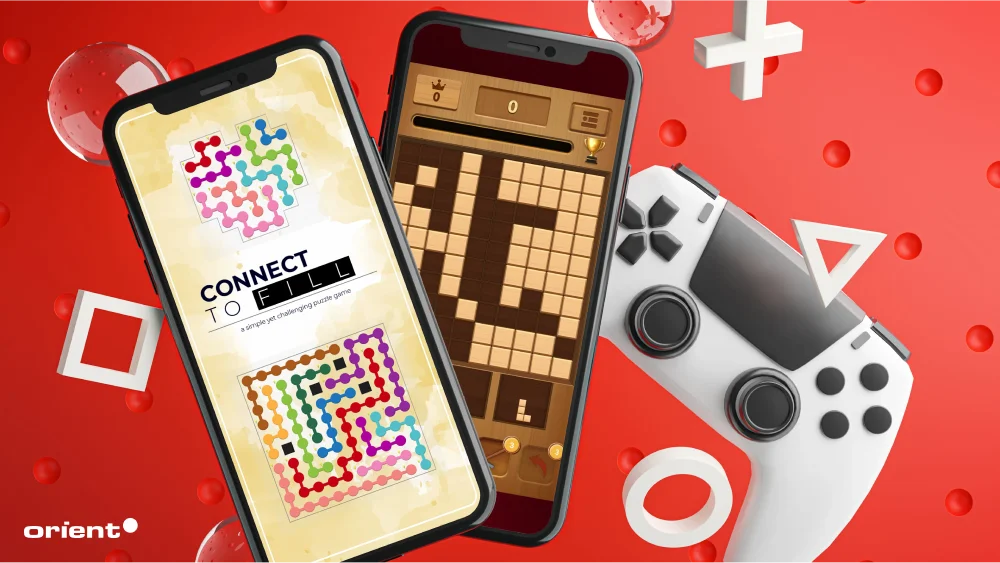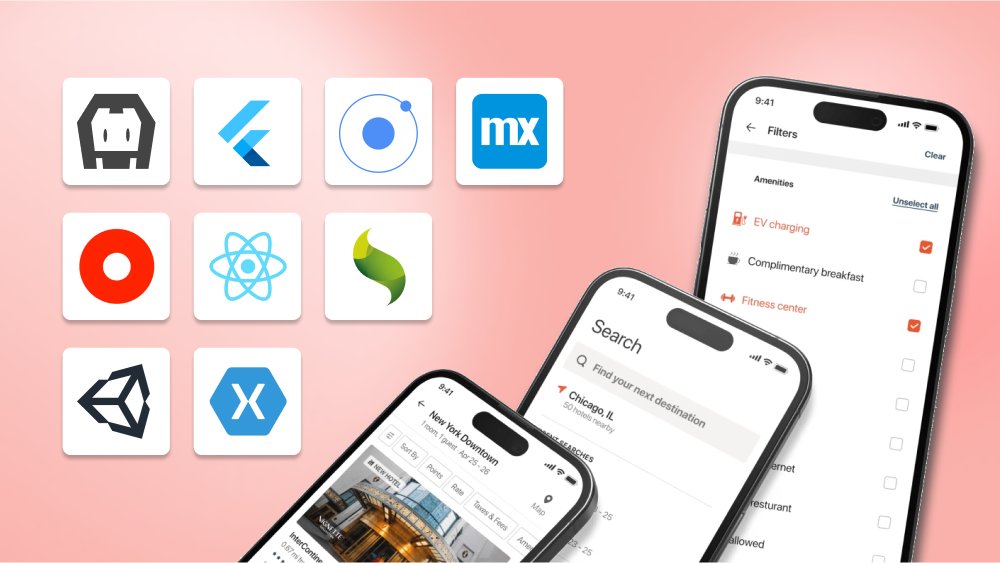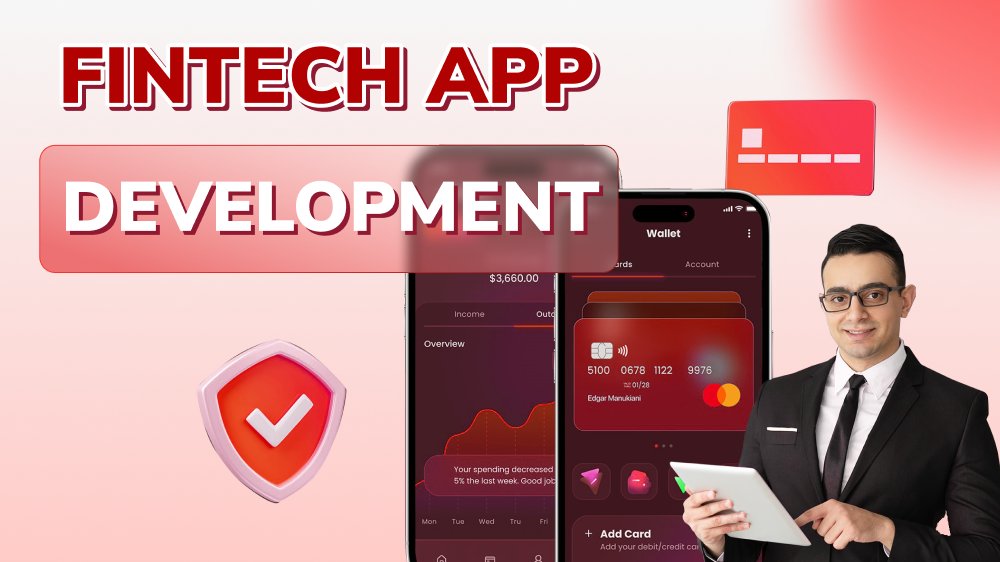How to Make a Game App: From Concept to Fun Experience

Content Map
More chaptersImagine scrolling on your phone or tablet, searching for the next game to indulge in. Browsing Google Play Store or Apple App Store, you see “Among Us,” a game where you and other players try to identify the imposter in a spaceship, and “Genshin Impact,” an open-world RPG with stunning graphics. These games have hundreds of millions of downloads, making you wonder if you could create the next big hit in the gaming industry.
If such a thought has crossed your mind at least once, you’ve come to the right article. This blog will tell you everything you need to know to create an engaging mobile game app, from the different types of games in the market and the developing steps to the costs of developing one.
Key Takeaways:
- Creating a game app doesn’t require a big budget and complex ideas.
- There are multiple game ideas for you to choose from and kickstart your game app development project, from hyper-casual games to competitive, multiplayer game apps.
- There are seven steps in developing a game app: researching ideas, identifying the game engine, game design, coding, testing, and launching.
Gaming Success Stories: Lessons You Can Learn

It’s easy to believe that all the major players in the gaming industry enjoyed success overnight. In reality, their success stories are often far from rosy. Let’s go back in time to discuss two early gaming app success stories.
Angry Birds
Most smartphone owners are familiar with the image of colorful birds flying across the screen to defeat evil green hogs. It took Angry Bird 51 tries before they could find a publisher willing to take the chance. The game was released in 2009 when the first iPhone was introduced. Rovio Entertainment, the company behind Angry Bird, decided to target the iPhone client base.
The rest, as they say, is history. This successful game boasts over 5 billion downloads. The lesson? Be patient with your game development endeavors and have a clear target audience in mind.
Clash of Clans
This is one of the most popular mobile game strategies on the iOS app store and Google Play store. Released in 2012 by Supercell, the game went through rigorous beta testing before making the cut and being released to the market.
A number of factors can be attributed to Clash of Clans’ success – its high standards, efficient marketing ideas, attention to detail, and mobile-first thinking. The lesson? It’s okay to have high standards. Supercell only released 4 games out of the dozen it developed. They are Clash Royale, Hay Day, Boom Beach, and of course, Clash of Clans.
Types of Mobile Game Apps

There are several types of mobile game genres aspiring game developers can choose from.
Puzzle: A timeless game genre loved by old and young, puzzle games are perfect for filling dull moments during commutes or brief free moments.
Examples: Tetris, Monument Valley
Strategy: Slow-paced but still entertaining, strategy mobile games are another popular game genre. Users can still be entertained while honing their strategic thinking skills.
Examples: Civilization VI, Clash of Clans
RPG: In Role-Playing Games (RPGs), players assume a character’s role in an interactive story. RPGs often feature extensive character customization options and complex storylines.
Examples: Genshin Impact, Final Fantasy
Simulation: Simulation games resemble real-life situations – meaning they can serve both entertainment and educational purposes. Experiencing life from a different perspective is always fun.
Examples: Stardew Valley, The Sims Mobile
Racing: The short burst of adrenaline and competitiveness makes racing games popular. This is another classic game genre.
Examples: Need For Speed: Hot Pursuit, Asphalt
MOBA: MOBA, or known as Multiplayer Online Battle Arena games, require quite a learning curve. This feature, however, is also what makes it so addictive and loved by many. Once mastered, the gaming experience is quite rewarding.
Examples: Mobile Legends, Wild Rift
Step-by-step Guide on How to Make a Gaming App

It’s always a great idea to have a professional Android games or Apple games development company on board to help you with the entire game development process. However, knowing the basic steps to bring a gaming concept to life is just as crucial.
Validate Your Game Idea
Knowing and understanding the gaming industry is the first stepping stone towards your success. Even with an idea in mind, try to find a detailed answer to the following questions:
- What popular games are similar to your game idea?
- Have you tried playing some of them? What did you like or dislike?
- What game mechanics have caught your eye?
- Who is your target audience? Keep in mind that the gaming demography has changed drastically over the years – gamers are no longer your typical teenage boys, a 2022 survey showed that 76% of gamers are over 18 years of age.
- Visualize the final game:
- Is the game’s graphics going to be 2D or 3D?
- What are the game mechanics?
- Do you have a clear idea of the game’s characters and storyline?
- What are your monetization plans?
What Game Engines Are You Going to Use?
A game engine is a software framework created to streamline video game development. It provides tools like 2D/3D graphics rendering, physics simulations, AI for responsive gameplay, sound management, and animation support, all optimized for various programming languages.
Examples of popular game engines are Unity, Unreal Engine, Game Maker, etc. Each has its pros and cons, so it ultimately comes down to your skill and project requirements. Some even use a programming language like C to build the game from scratch, but most developers prefer using the existing patterns that game engines provide.
Game Design
After deciding on the backend, it’s time to think about the visual aspects of the game. You can start by creating a design document – this should include all the visual and related game ideas, from the game logic, character designs, level designs, concept arts, rewards, and goals. Simply put anything and everything related to the game’s design should be written down in this document. Here are five more things to keep in mind to make this step efficient:
- Have a consistent art style.
- Colors have power and meaning. Leverage them to create the best gaming experience.
- Mobile screens are small, so don’t overcomplicate your designs.
- File sizes should be small to optimize performance and data plans.
- The design elements should look good and be easy to interact with.
Coding
It’s time for the actual coding process. If this is not your strong suit, consider hiring a team of dedicated professionals to get the job done efficiently. Ensure they are proficient in both the native programming language of your target platform (like Swift for iOS or Kotlin for Android) and the scripting language required by your game engine (such as C# for Unity or GDScript for Godot). Equip yourself with the best tips for hiring mobile app developers first, however, to make sure the recruitment process goes on smoothly.
Game Testing
Testing the game allows you to see how the game works in real life and make improvements based on the feedback provided.
- Test the game on different devices, screen sizes, processing powers, and resolutions to spot any related problems.
- Test the game in a variety of environments for its stability, e.g. when multiple apps are running in the background.
- Test user experience. Are the players playing the game the right way? Are the instructions too vague? Is there anything that you can do to improve the gamers’ experience?
- Test the game’s performance. Evaluate the game’s performance by checking factors like loading time, frame rate, and memory usage, as mobile games can demand significant resources.
Monetizing Strategy
Many app makers build apps for revenue, and this is a completely solid reason. There are 4 popular models to drive revenue.
- Ads are the most common, offering small rewards in exchange for watching videos, though they should be used sparingly to avoid frustrating players.
- In-app purchases (IAPs) are popular in larger games with valuable items like skins or battle passes, but their success varies by genre. This model is less likely to succeed in hyper-casual games.
- Subscriptions work best for games with long player lifetimes, often seen in educational titles. The biggest challenge of this model is the high user churn rates. It is often used alongside IAPS for extra revenue.
- Paid downloads are the least used due to high competition and player churn.
Publishing
After all the hard work, it’s finally time to publish the game! Whether you choose to release the game on Google Play Store, Apple App Store, Amazon Appstore, etc., we suggest you proceed with this step, just like any other step, with a lot of preparation and research.
- Research the platform’s policies, guidelines, and requirements before submitting your game.
- Carefully prepare all the game assets and promotional materials.
- Include the right keywords relevant to the game in the right category to attract your target audience.
- Conduct regular updates to fix bugs, update features, and keep your users engaged.
Bring Your Game Idea to Life

Building a mobile app takes serious dedication and time, but it is a fun and rewarding experience. You can enhance the experience by having the right team on board. Orient Software wants to be that team and help you make your game idea into reality. Contact us today to have a chat with our professionals!
FAQs
Orient Software is happy to help you answer some of the most frequently asked questions when it comes to the topic of building game apps.
How Much Does It Cost to Build a Game?
The overall cost of developing a mobile game varies widely based on its complexity, target platform, team location, and required design features. Key expenses include the development team’s salaries, platform-specific costs (iOS, Android), game engine licensing (like Unity or Unreal), and creating graphics and sound. Marketing and distribution also add to the budget. Depending on these factors, the cost can range from only a few thousand to millions of dollars. Accurately estimating the budget requires a clear understanding of the game’s needs.
How Long Does It Take to Build an App?
Building an application can take anywhere from a few months to several years. It depends on the type of game, its complexity, the size of the development team, and other external factors. Fun fact: Duke Nukem Forever is the game that took the longest to develop - 14 years and 44 days.







